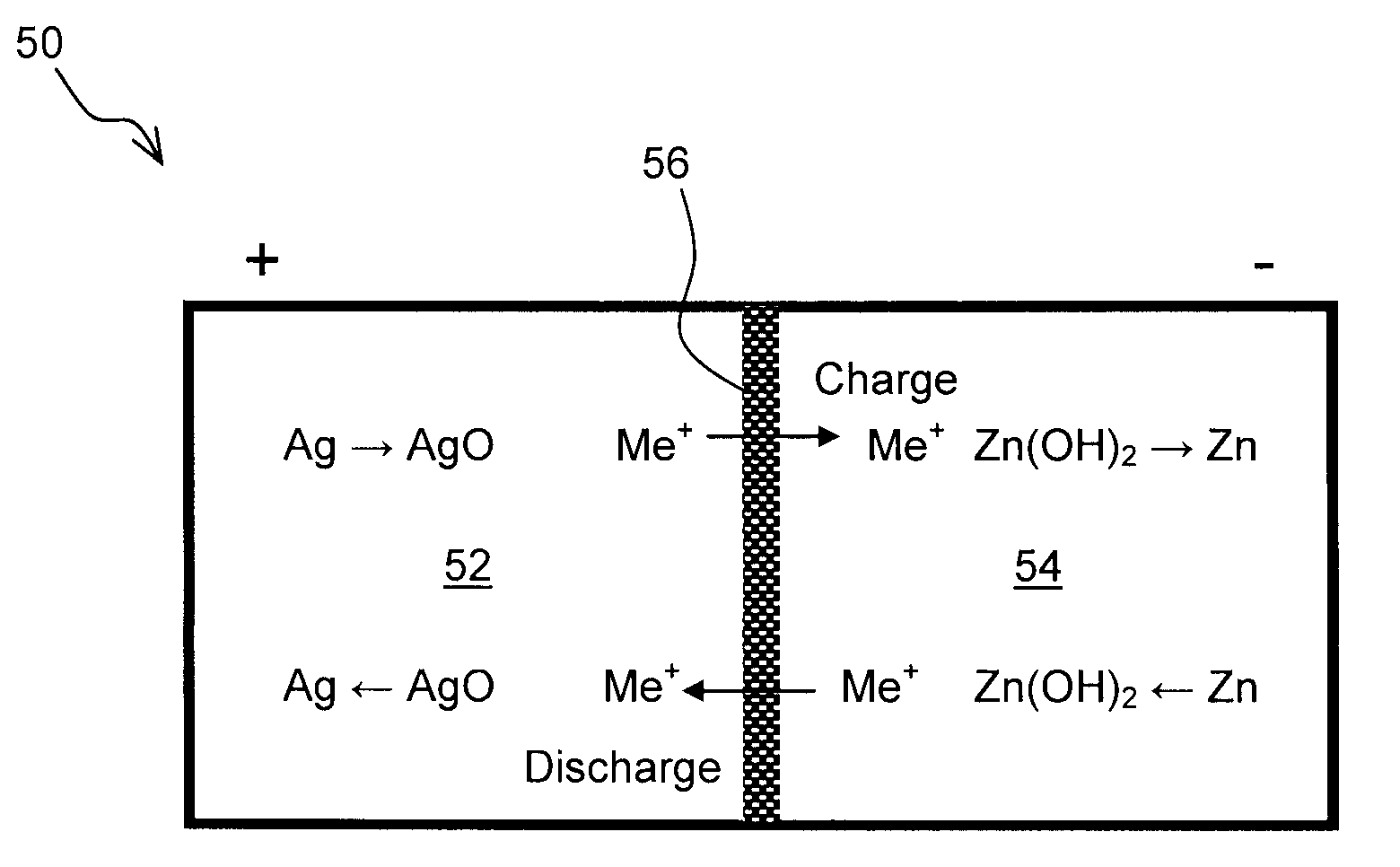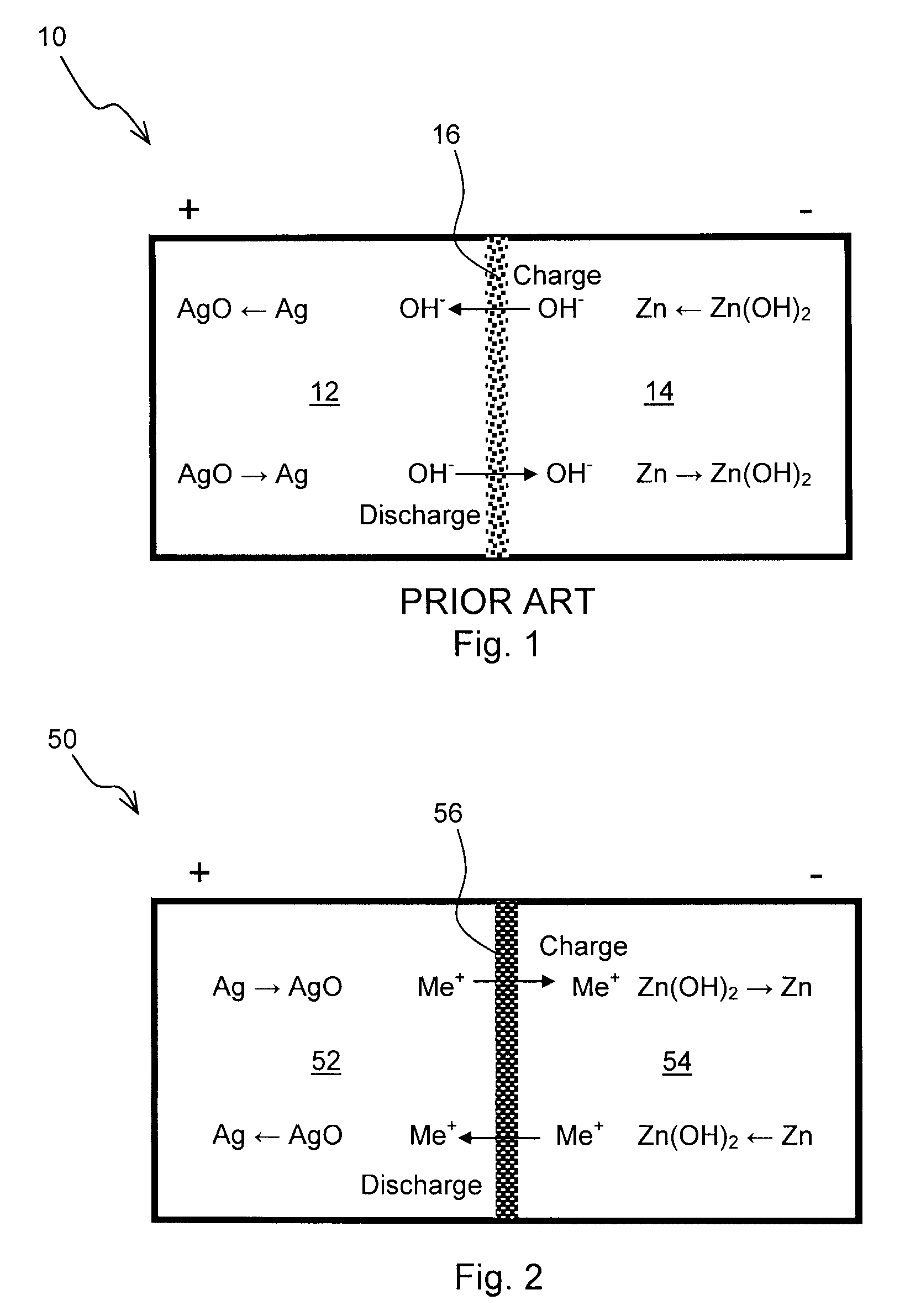Zinc Anode Battery Using Alkali Ion Conducting Separator
- Summary
- Abstract
- Description
- Claims
- Application Information
AI Technical Summary
Benefits of technology
Problems solved by technology
Method used
Image
Examples
example 1
Construction and Testing of Zn—NaSICON—MnO2 Battery
[0074]A Zn—MnO2 battery was constructed with NaSICON as the separator instead of a microporous separator. Battery grade manganese dioxide was purchased from Aldrich. Battery grade low gassing Zn metal powder was obtained from a commercial battery source. 50 wt. % aqueous sodium hydroxide was added such that stoichiometric amount of sodium hydroxide was present in the anode. Note that sodium hydroxide is not just an electrolyte but a participant in the anodic discharge reaction as follows:
Zn+2NaOHZn(OH)2+2Na++2e−
[0075]The opposite electrode or cathode contained about 20 wt. % graphite to improve the electrical conductivity. 25 wt. % NaOH was added to the MnO2 cathode such that excess water was present in the catholyte. Note that water is a participant in the cathodic reaction as follows:
MnO2+H2O+Na++e−MnOOH+NaOH
[0076]A stainless steel current collector was used with the zinc anode. Nickel current collector was used for the second ele...
PUM
| Property | Measurement | Unit |
|---|---|---|
| Electrical conductor | aaaaa | aaaaa |
| Electric potential / voltage | aaaaa | aaaaa |
| Electric properties | aaaaa | aaaaa |
Abstract
Description
Claims
Application Information
 Login to View More
Login to View More - R&D
- Intellectual Property
- Life Sciences
- Materials
- Tech Scout
- Unparalleled Data Quality
- Higher Quality Content
- 60% Fewer Hallucinations
Browse by: Latest US Patents, China's latest patents, Technical Efficacy Thesaurus, Application Domain, Technology Topic, Popular Technical Reports.
© 2025 PatSnap. All rights reserved.Legal|Privacy policy|Modern Slavery Act Transparency Statement|Sitemap|About US| Contact US: help@patsnap.com



